Picture this: You step out of your back door into a personal oasis, a slice of paradise crafted from your imagination and brought to life in your very own backyard. As an urban planner with a passion for breathing new life into old spaces, I’ve seen firsthand how backyard landscaping can transform not just a property, but the lives of those who inhabit it. From the historic courtyards of Kraków to the sleek, modern gardens of Guangzhou, I’ve drawn inspiration from diverse cultures and design philosophies. Today, I’m excited to share with you the secrets to creating your outdoor sanctuary.
Backyard landscaping is more than just planting a few flowers or mowing the lawn—it’s about creating an extension of your home that reflects your personality, meets your needs, and enhances your quality of life. Whether you’re looking to carve out a cozy nook for your morning coffee, design an entertainment space for gathering with friends, or cultivate a thriving garden, this guide will walk you through the process of transforming your outdoor space into a beautiful, functional retreat.

Key Takeaways
Before we dive in, let’s highlight some key points to keep in mind:
- Planning is paramount: Take the time to assess your space, set clear goals, and create a realistic budget and timeline.
- Draw inspiration from various sources: Your backyard should reflect your unique taste and lifestyle.
- Incorporate essential elements: Balance hardscaping (like pathways and seating areas) with softscaping (plants and trees).
- Embrace eco-friendly practices: Consider using native plants, implementing water conservation techniques, and adopting organic gardening practices.
- Maintain your masterpiece: Regular seasonal maintenance is crucial to keep your backyard looking its best year-round.
- Create privacy: Enhance the sense of seclusion with strategic plantings or structures.
- Light up your nights: Thoughtful outdoor lighting can extend the usability of your space and create a magical ambiance after dark.
Planning Your Outdoor Space
As the old Polish proverb goes, “Measure seven times, cut once.” This wisdom rings especially true when it comes to backyard landscaping. Let’s dive into the essential steps of planning your backyard transformation.
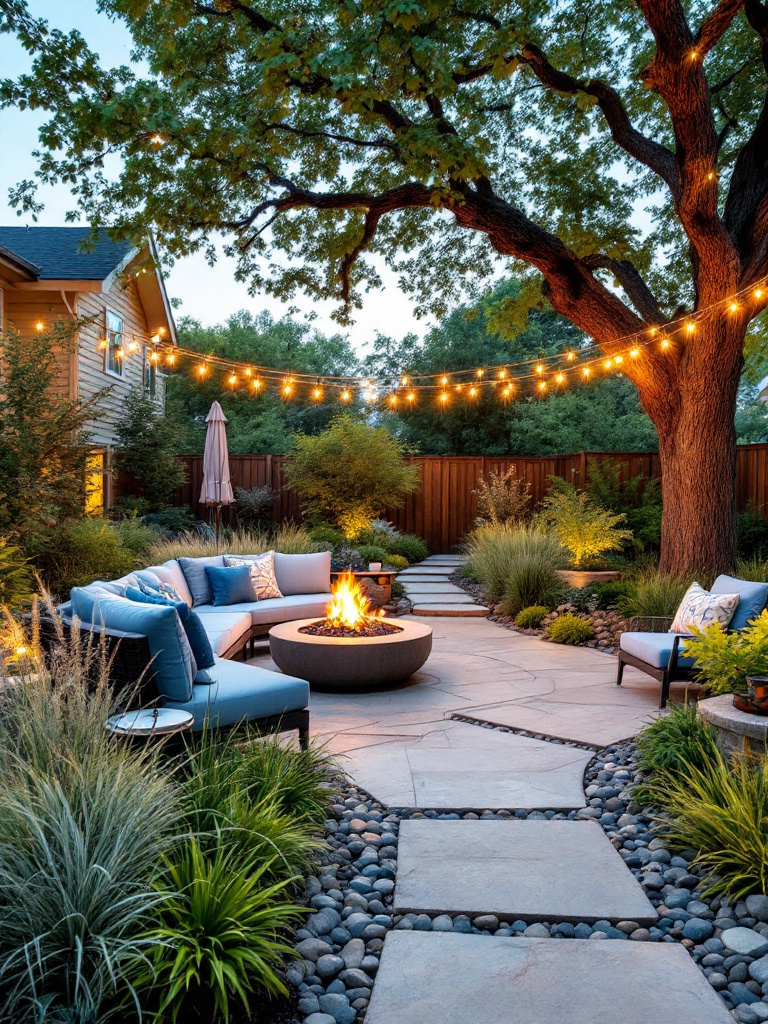
Assess Your Space
Start by creating a detailed map of your yard, noting existing features like trees, structures, and slopes. Observe how sunlight moves across your yard throughout the day and consider conducting a soil test to determine its pH level and nutrient content.
Interesting fact: Did you know that a well-designed outdoor space can increase your outdoor living time by up to 300%? That’s a lot of extra fresh air and vitamin D!
Set Your Goals
Make a list of all the features you’d like to include in your backyard. This might include a patio for dining, a play area for kids, a water feature for tranquility, or a fire pit for cozy evenings. Once you have your wish list, prioritize based on your budget, available space, and how you’ll use the yard most often.
Practical tip: Create a mood board with images of backyard designs you love. This visual reference can help you communicate your vision to landscapers or contractors.
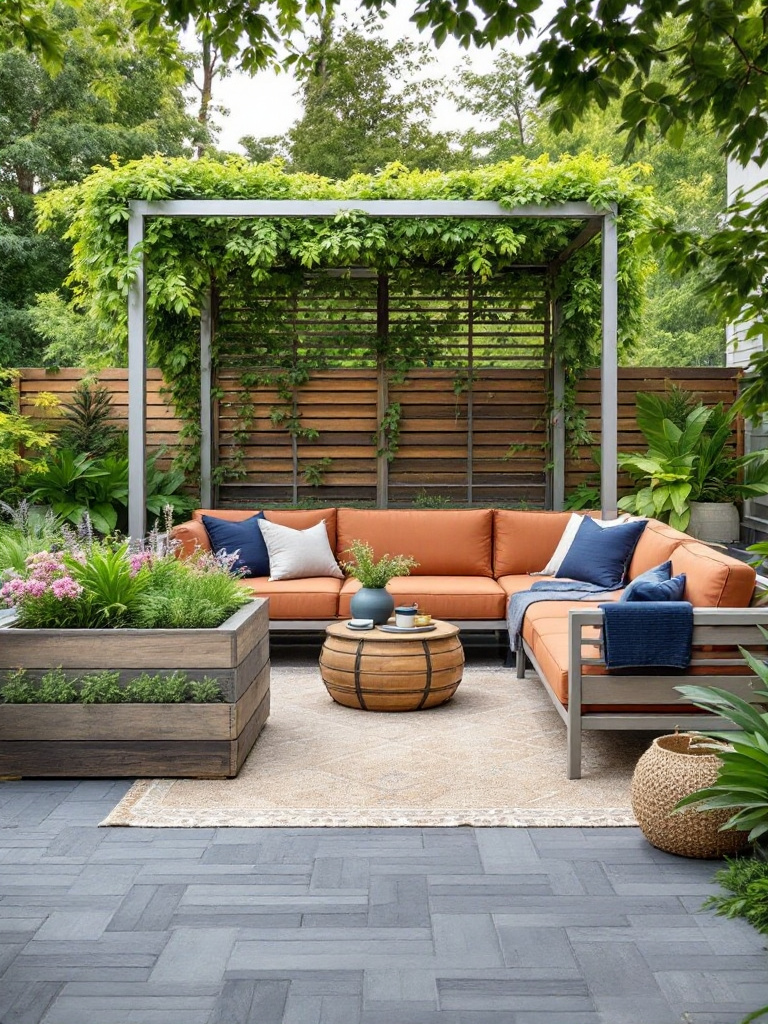
Budget and Timeline
Research the costs of materials and labor in your area, and don’t forget to factor in ongoing maintenance expenses. Set aside about 15-20% of your budget for unexpected expenses. When it comes to timeline, be generous—landscaping projects often take longer than expected.
Interesting statistic: A well-executed backyard landscaping project can increase your property value by 5-12%. It’s an investment that pays off in more ways than one!
Design Ideas and Inspiration
Now that we’ve laid the groundwork, let’s explore some design ideas that will help you create a backyard that’s both beautiful and uniquely yours.
Choose a Style
Consider your home’s architecture when choosing a style. A sleek, contemporary house might pair well with a minimalist landscape design, while a Victorian-era home could be complemented by a more traditional, formal garden layout. However, don’t be afraid to mix things up!
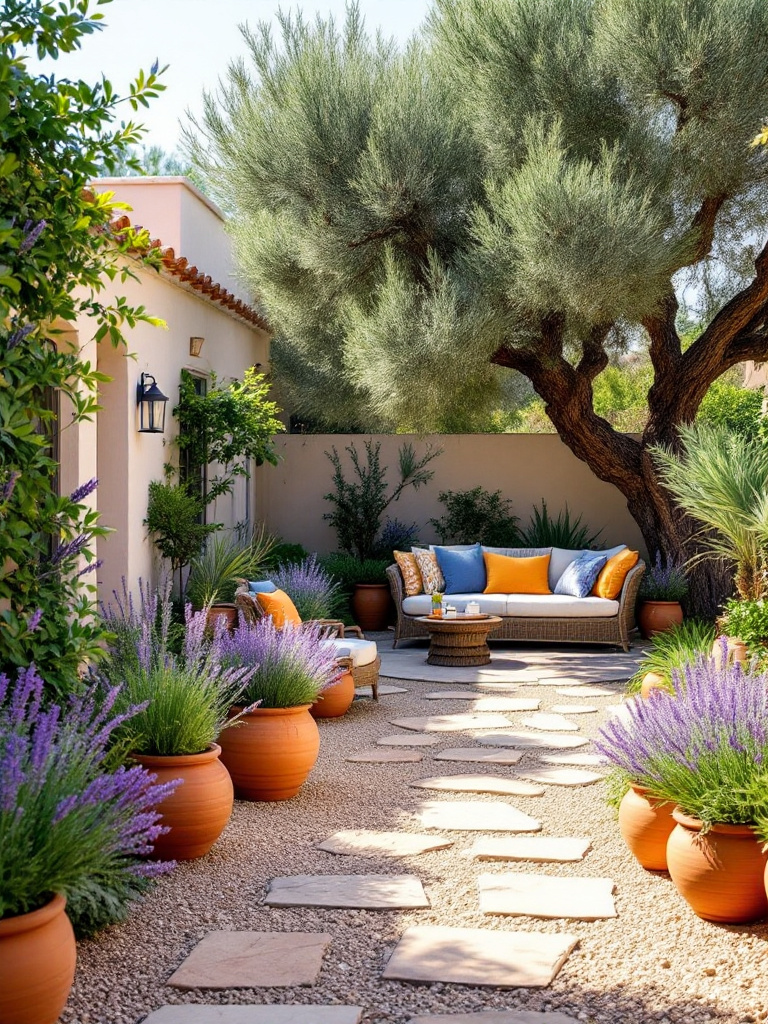
Interesting fact: Ancient civilizations like the Greeks and Romans were known for their elaborate garden designs, many of which continue to inspire modern landscape designers.
Use Color Schemes
When planning your color scheme, think beyond just flowers—consider the hues of foliage, bark, hardscaping materials, and even outdoor furniture. Remember to consider how your color scheme will change throughout the year.
Integrate Structures
When designing a functional backyard landscape, consider how structures like decks, pergolas, and gazebos will integrate with your overall design. Don’t forget about vertical space! Trellises, arbors, and living walls can add height and interest to your design.
Key Landscape Elements
Let’s dive into the key elements that will bring your vision to life.
Plants and Trees
When selecting plants, consider not only their aesthetic appeal but also their practical qualities. Native plants are often an excellent choice as they’re adapted to local conditions and require less maintenance. Did you know that native plants can reduce water consumption by up to 30% and fertilizer use by up to 50%?
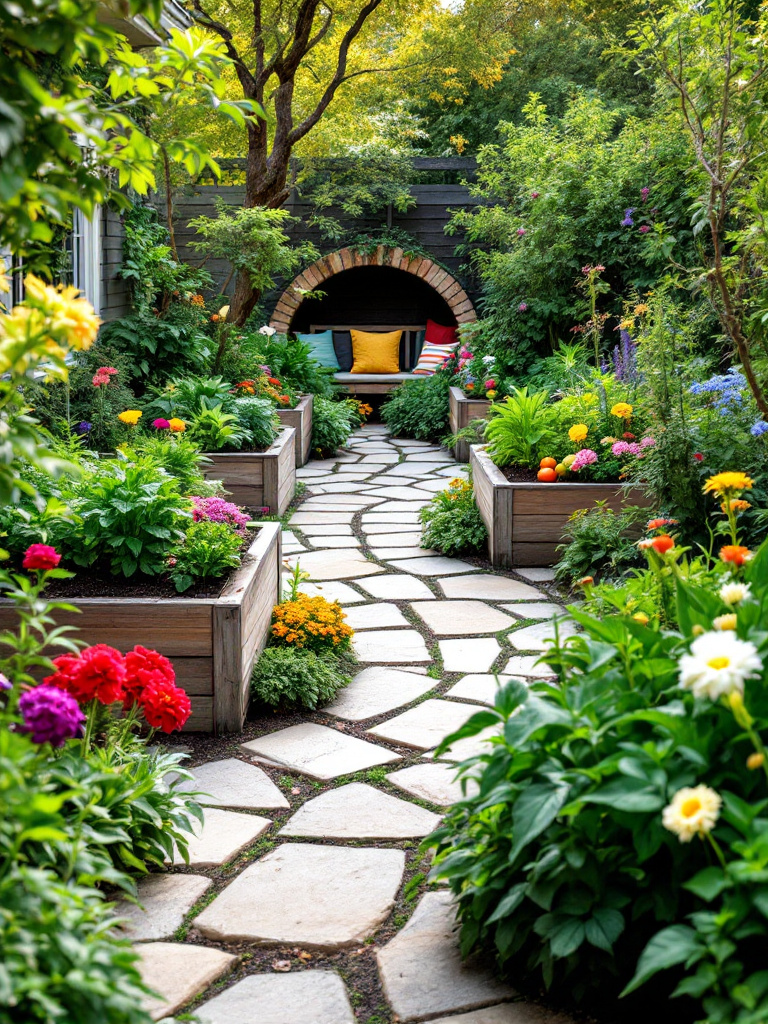
Trees can serve multiple purposes in your backyard landscaping. They provide shade, create privacy, and can even increase your property value by up to 15%.
Hardscape Features
Hardscaping elements like pathways, retaining walls, and patios form the backbone of your backyard design. When planning your hardscaping, consider both aesthetics and practicality. Don’t forget about the power of edging—simple borders around garden beds or along pathways can give your landscape a polished, professional look.
Water Elements
Water features can add a whole new dimension to your backyard landscaping. Options range from simple bird baths to elaborate koi ponds. When incorporating water elements, always consider safety and maintenance.
Eco-Friendly Practices
Let’s explore some eco-friendly practices that you can incorporate into your backyard landscaping project.
Sustainable Materials
Consider using recycled materials in your design. Reclaimed wood can be transformed into charming garden beds or rustic seating areas. For pathways and patios, look into permeable pavers that allow water to seep through, reducing runoff and helping to replenish groundwater.

Interesting statistic: Did you know that using recycled materials can reduce waste by up to 75%?
Water Conservation
Choose drought-resistant plants that thrive in your local climate. Consider implementing a drip irrigation system or soaker hoses for your garden beds. Rain barrels are another great addition to an eco-friendly backyard—they collect rainwater from your roof, which can then be used to water your garden during dry spells.
Composting and Recycling
Composting is a fantastic way to reduce waste and create nutrient-rich soil for your garden. Did you know that composting can reduce your household waste by up to 30%? Look for opportunities to repurpose materials in your backyard—old tires can become planters, pallets can be transformed into vertical gardens, and broken concrete can be used to create unique pathway stepping stones.
Seasonal Maintenance Tips
To keep your space looking its best year-round, it’s essential to understand and implement seasonal maintenance practices.
Spring Tasks
Start by doing a thorough clean-up of your yard. Prune your trees and shrubs before new growth begins. Amend your soil with compost or other organic matter, and consider overseeding any bare patches in your lawn.
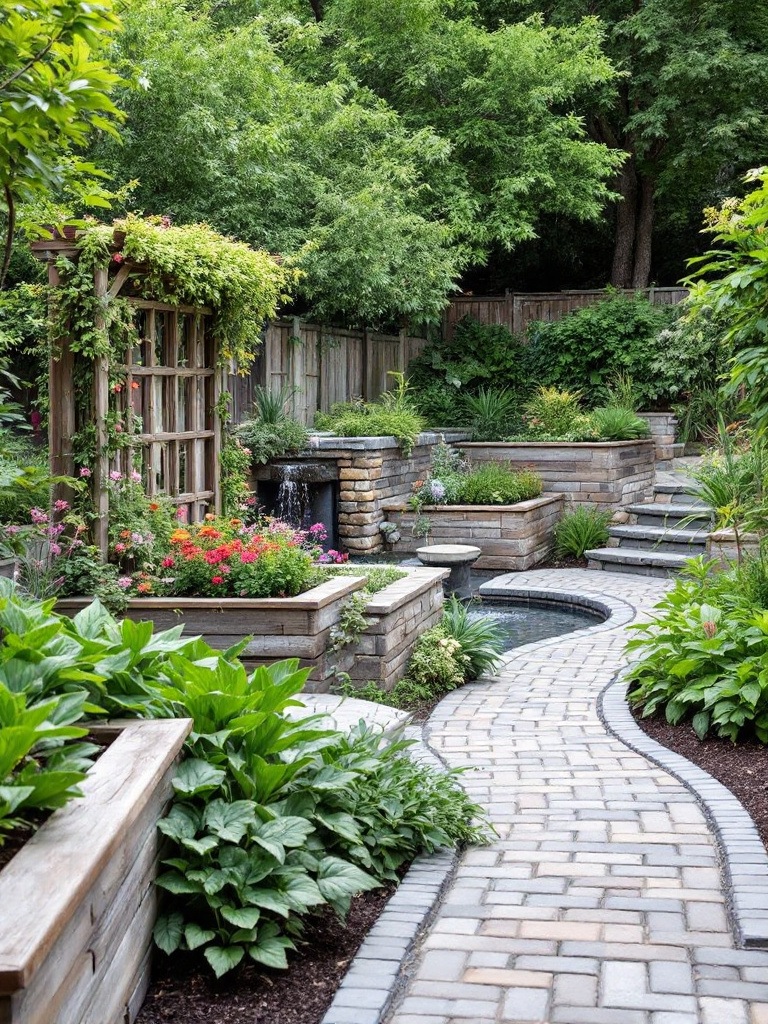
Summer Care
Water deeply but less frequently to encourage deep root growth. Keep an eye out for pests and diseases, and consider introducing beneficial insects as a natural pest control method. Don’t forget about your hardscaping elements—clean and seal your deck or patio to protect it from sun damage and wear.
Fall Preparation
Clean up fallen leaves, but consider leaving a few to provide a habitat for beneficial insects. Fall is the perfect time for planting many trees, shrubs, and perennials. Don’t put away your pruning shears just yet—fall is an excellent time to prune many trees and shrubs, especially those that bloom on new wood.
Interesting statistic: According to the National Association of Landscape Professionals, fall maintenance can reduce spring yard work by up to 75%!
Enhancing Backyard Privacy
A well-designed backyard should feel like a personal retreat. Let’s explore some creative ways to enhance privacy in your backyard.
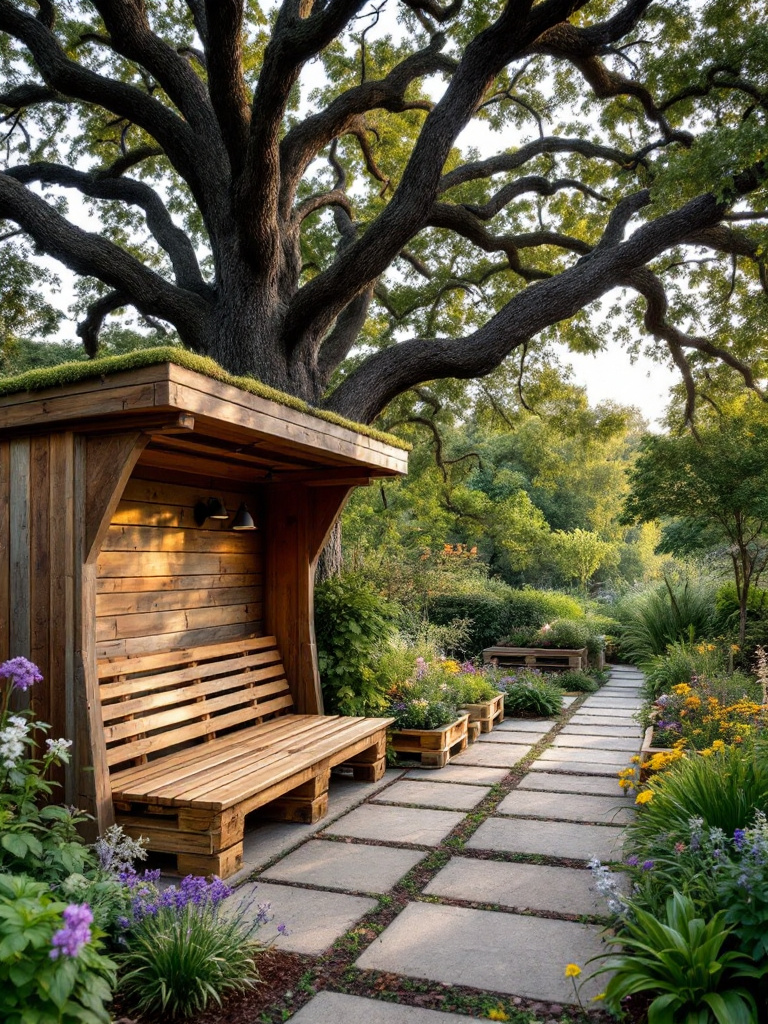
Use Fences and Walls
When choosing a fence, consider both its function and its aesthetic appeal. Walls can be an excellent alternative to fences, especially if you’re looking to create distinct “rooms” within your backyard.
Plant Hedges and Shrubs
Fast-growing evergreen shrubs like arborvitae or boxwood can create a dense, year-round privacy screen. For a more diverse look, consider mixing different types of shrubs with varying heights, textures, and colors.
Install Pergolas or Trellises
A pergola over a patio or seating area can be outfitted with outdoor curtains or shade cloths for adjustable privacy. Trellises can be used to create privacy screens in specific areas of your yard.
Interesting statistic: Studies have shown that spending time in green spaces can reduce stress levels by up to 50%.
Lighting Your Outdoor Area
Thoughtful outdoor lighting not only extends the usability of your space but also enhances its beauty and security.
Pathway Lighting
Solar-powered lights are a popular and eco-friendly option for pathway lighting. They’re easy to install and require no wiring, making them perfect for DIY backyard landscaping projects.
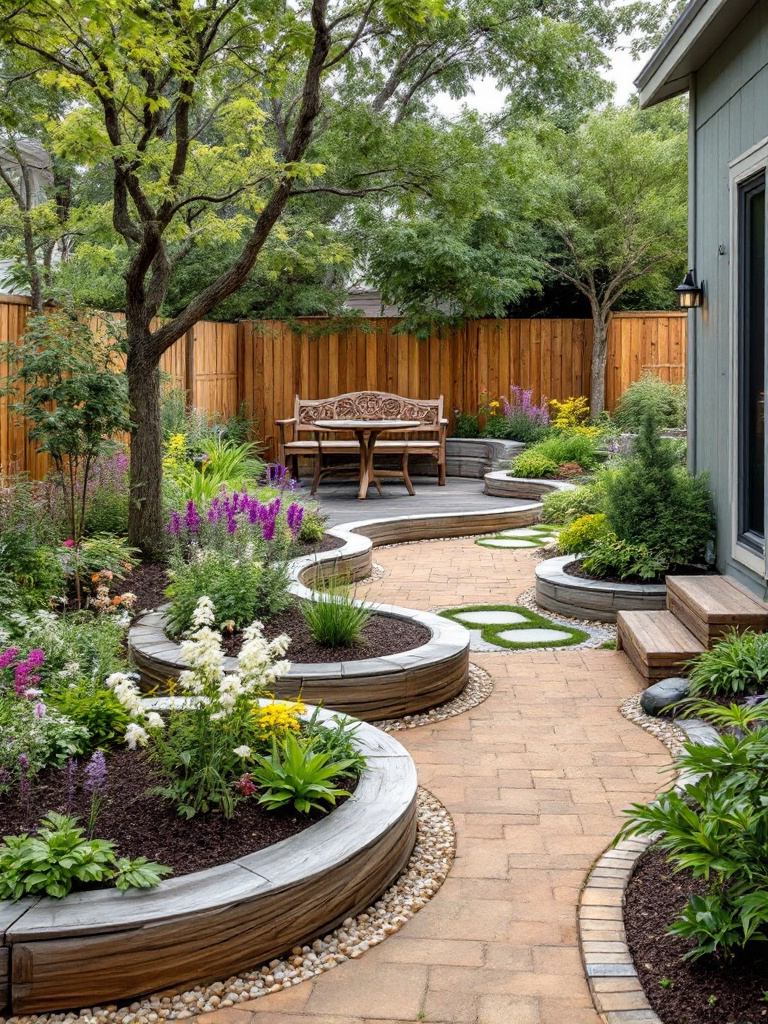
Accent Features
Use accent lighting to highlight the best features of your backyard landscape. Spotlights can be used to illuminate trees from below, creating a dramatic effect. For water features, submersible lights can bring fountains and ponds to life after dark.
Safety and Security
Motion-sensor lights are an excellent choice for security. Don’t forget about stairs and level changes in your landscape—step lights or rope lights along the edges of stairs can prevent trips and falls while adding a stylish touch to your hardscaping.
Interesting statistic: According to the Outdoor Power Equipment Institute, homes with well-planned landscape lighting can see a decrease in property crime by up to 39%.
Incorporating Native Plant Species
Native plants are species that have evolved to thrive in your local climate and soil conditions. They typically require less maintenance once established and play a crucial role in supporting local ecosystems.
When choosing native plants for your backyard, consider the specific conditions of your site. Start by researching plants native to your region. Consider incorporating a mix of trees, shrubs, perennials, and grasses to create a diverse and layered landscape.
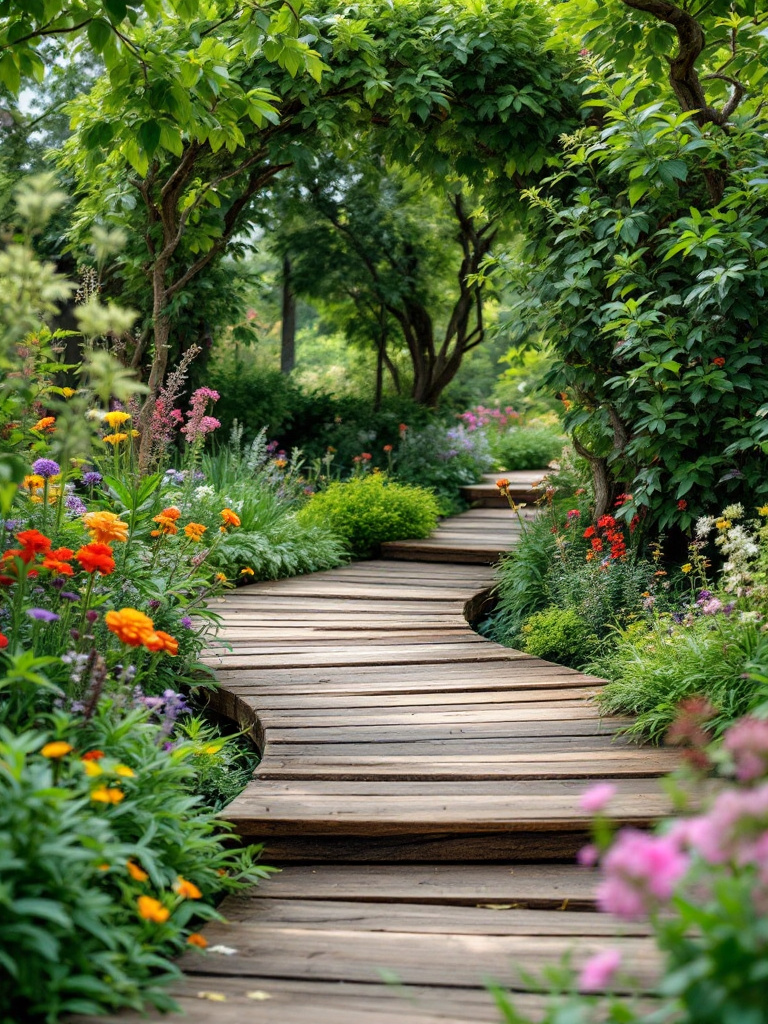
While native plants are generally low-maintenance, they still require proper care, especially when first established. Plant at the right time, prepare the soil, water regularly at first, mulch appropriately, and avoid over-fertilizing.
Interesting fact: Native plants support up to 90% more wildlife than non-native plants. By incorporating natives into your backyard, you’re creating a vibrant ecosystem right outside your door!
Final Remarks
As we conclude our journey through the world of backyard landscaping, I’m reminded of a Polish saying my grandmother often used: “A beautiful garden is a work of heart.” Your backyard is more than just an outdoor space—it’s an extension of your home, a reflection of your personality, and a sanctuary where memories are made.
Remember, transforming your backyard is a journey, not a race. Take your time, enjoy the process, and don’t be afraid to adjust your plans as you go along. With patience, creativity, and the tips we’ve explored in this guide, you’ll soon be enjoying your piece of paradise right outside your back door.
So, grab your gardening gloves and let your imagination run wild—it’s time to embark on a backyard landscaping adventure that will redefine your relationship with your outdoor space!






